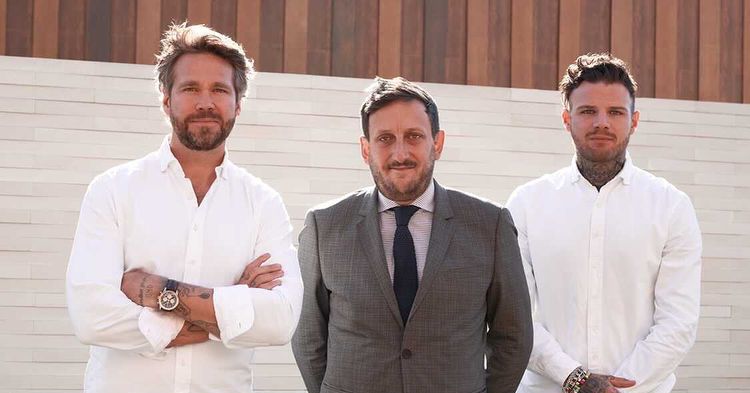The coronavirus has already modified the best way we work. Now additionally it is altering bodily house.
Many firms make changes to their workplaces to make staff really feel safer once they return to their private work, equivalent to: B. enhancing air circulation methods or transferring desks additional aside. Others are meting out with desks and constructing extra convention rooms to accommodate staff who nonetheless work remotely however come to conferences.
Architects and designers say it is a time of experimentation and reflection for employers. Steelcase, an workplace furnishings maker primarily based in Grand Rapids, Michigan, says its analysis reveals that half of world firms are planning main workplace transforming this 12 months.
“This 12 months might have made you suppose extra basically than ever, ‘Hey, why are we going into an workplace?'” Says Natalie Engels, design principal in San Jose, California, at Gensler structure agency.
Not each firm makes adjustments, and Engels emphasizes that it isn’t obligatory. She urges prospects to recollect what labored properly – and what did not – earlier than the pandemic.
What workplace life will appear to be after the pandemic continues to be open. However actual property consultants have little doubt that vacant business properties will improve. In lots of cities, builders say a number of the buildings will be transformed to take care of the reasonably priced housing disaster. The apply is named “adaptive reuse” and has been used earlier than to revive city cores in a break-in. Now some legislators are getting ready legal guidelines that might make it straightforward for a constructing that has misplaced its goal to seek out new life.
Nonetheless, designers say many firms are searching for new methods to make workplace employees really feel protected and busy, particularly as workers shortages make it tough to rent.
Final 12 months, this prompted the meals and pharmaceutical firm Ajinomoto to revamp the design of its new North American headquarters outdoors of Chicago.
Ajinomoto staff returned for private work in Could in a constructing with wider hallways and glass panels between the cabins to provide them more room and attempt to really feel safer. To enhance psychological well being, the corporate reworked a deliberate work space right into a spa-like “leisure room” with loungers and delicate music. Within the occasion that prospects don’t need to journey, a take a look at kitchen is wired for digital displays. And a cleansing crew comes by twice a day and leaves post-it notes to indicate what has been disinfected.
“It might be an exaggeration, however it might supply consolation to those that are delicate to returning to a private work atmosphere,” mentioned Ryan Smith, government vice chairman of Ajinomoto North America. Smith estimates that 40% of the brand new headquarters design has modified as a result of COVID.
Shobha Surya, Affiliate Supervisor for Initiatives and Gross sales at Ajinomoto, loves the house.
“The workplace provides you a work-life stability,” she mentioned. “You might be extra concentrated right here and haven’t any distractions.”
Surya mentioned she can also be excited to work together with her colleagues once more.
She is just not alone. Surveys present that workplace employees are likely to miss socializing and collaborating with colleagues probably the most, mentioned Lise Newman, Office Follow Director at SmithGroup structure agency. Firms attempt to foster this relationship by creating extra social facilities for his or her staff. Some imitate espresso homes with picket flooring, cubicles and pendant lights.
“Firms are attempting to make it really feel like it is a cool membership that folks need to come to,” Newman mentioned.
Steelcase has divided one in all its lobbies into cozy assembly rooms of varied sizes, separated from each other by planted partitions. Cellular video displays will be retracted in order that distant employees will also be concerned in discussions.
However after a 12 months of working from residence, some staff crave privateness, so Steelcase added extra glass-enclosed cubicles for personal conversations and cocoon-like cubicles with small sliding doorways.
Mark Bryan, a senior inside designer at M + A Architects from Columbus, Ohio, expects a extra fluid workplace tradition with completely different workplaces on any given day sooner or later. Introverts can select a small, non-public room; Extroverts, a desk within the workplace café.
Some workplace adjustments replicate a brand new dedication to hybrid work. Valiant Applied sciences, which gives technical help and different companies to firms, lets its staff work largely from residence, however lets them reserve a desk for the times they need to come to the workplace. The New York firm has eliminated rows of desks and made more room between the remaining ones. Staff depart keyboards, mice, and headsets in lockers.
Megan Fast, a gross sales rep at Valiant, mentioned she appreciates the corporate that permits her to get again into workplace life this month.
“We want a whole lot of time to reorient ourselves,” she mentioned. “It provides me a sense of safety once I allow us to set the tempo for the return.”
Not each design change will final. When Steelcase began bringing again some employees final summer season, they pushed the tables within the cafeteria large aside, permitting just one particular person per desk. It made the room so miserable that nobody wished to sit down there, mentioned Jim Keane, CEO of Steelcase.
“An vital lesson is that it must be protected, but additionally inspiring,” he mentioned. “Folks will truly anticipate extra from workplaces sooner or later.”















